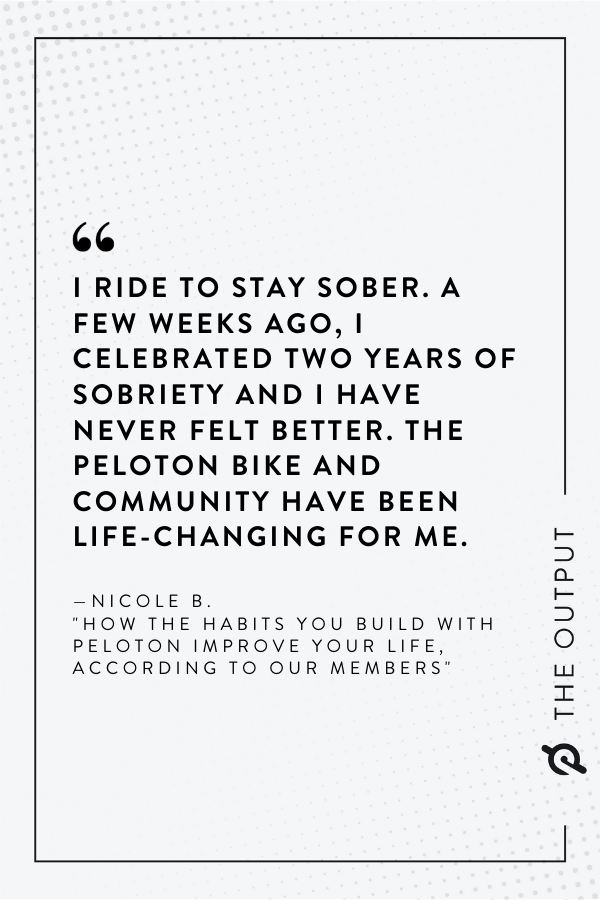When Peloton is a big part of your life, it’s only natural that the good habits you develop in your workout regimen carry over into the rest of your day. Not only does regular exercise help you stay fit, but consistently breaking a sweat can also raise your endorphin levels, help you sleep better and increase your productivity. So it comes as no surprise when Members report that their Bikes and Treads are taking them further—both mentally and physically—than they ever imagined possible. Here, our community weighs in on how the healthy habits they've formed with Peloton have improved the quality of their lives.
Beth F. (#bferris5), Intercourse, PA
“I’m a runner. I’ll always be a runner, I say. I always felt there was nothing comparable to my runner's high. Well, sometimes life throws you curveballs and you need to adjust. My back surgery 18 months ago was when I thought I’d never run again. So I needed a replacement. Step into my life, Peloton. Best decision I have ever made. I still supplement with a run here and there as I await my next surgery. But no impact [rides] and outputs of 700-plus . . . You can say I’ve found my new runner's high. Thank you so much Peloton for allowing me to keep my love of fitness in motion!”
Nicole B. (#mightymouse), Portland, OR
“I ride to stay sober. A few weeks ago, I celebrated two years of sobriety and I have never felt better. The Peloton Bike and community have been life-changing for me. It keeps me physically, mentally and spiritually fit. I was a 40-year-old woman who wasn’t quite sure where I was or what had happened the night before. This was a pattern I lived with for 25 years. Every time I get on the Bike, especially for a 5 AM class, I am grateful. I laugh. I cry. I am happy to be alive and living sober.”

Koray O. (#whiskeymonster), San Francisco, CA
“I make a living with tasting, drinking and marketing whisky. Thus, my lifestyle was not healthy at all before quarantine. I actually got the Bike to improve my fitness before quarantine started, but it happened to be the greatest coincidence. I lowered my alcohol consumption to a minimum, ate healthier and exercised everyday with Peloton. I have lost 30 pounds, am feeling better, sleeping easier and am definitely happier.”
Allie B. (#MrsPrestigeNJ), Oceanport, NJ
“This Bike that goes nowhere saved me from myself. I suffered from an eating disorder for over ten years. I under-ate and over-exercised. I was miserable. I lived at the gym, riding over 90 minutes on the bike seven days a week at the same pace and resistance. All I cared about was the calories burned. I had my baby boy on August 23, 2017 and, from that moment on, I wanted to be a good role model. Four weeks after giving birth, my husband ordered me a Peloton Bike and I stumbled upon Power Zone training. In order to keep up with the training programs and challenges, I had to fuel my body with nutritious meals and snacks. I no longer define myself by the numbers on the scale. Thank you Peloton for giving me the best gift in the world, a second chance to live life and to be a healthy and happy mother to my son!”
